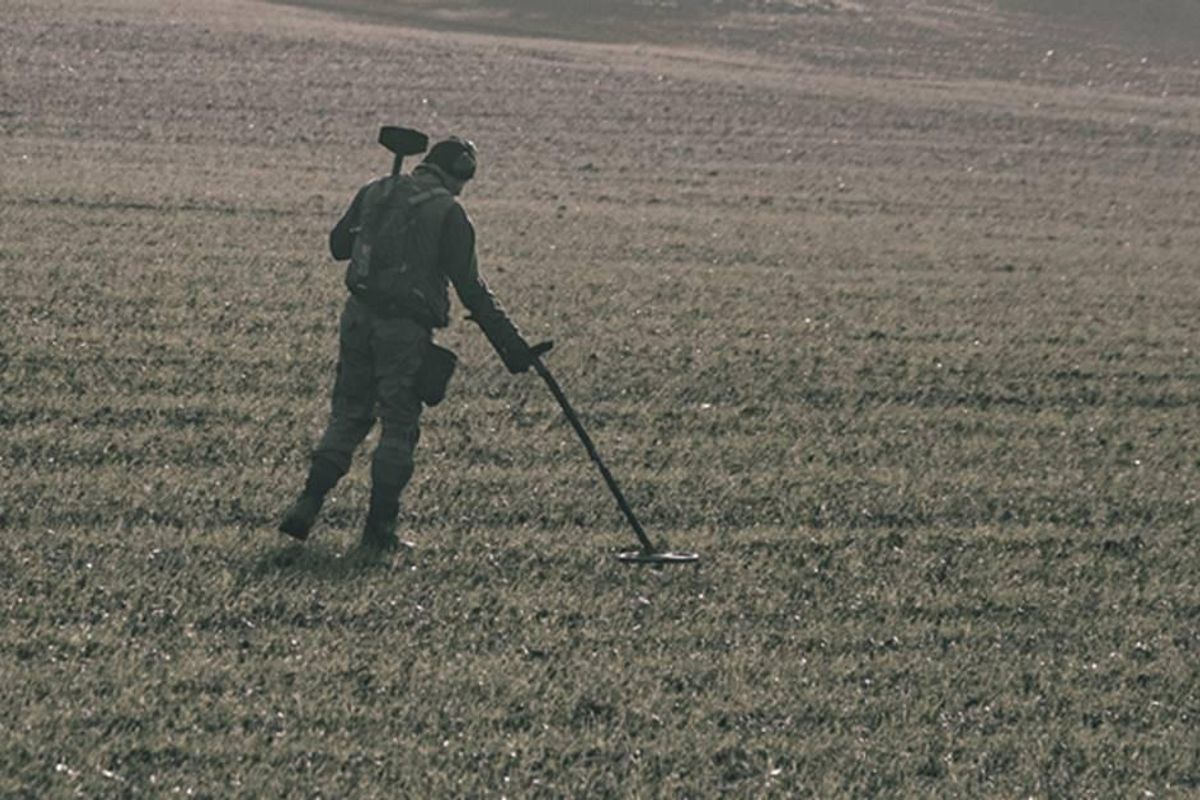
This article originally appeared on 04.06.22
A retired merchant navy engineer in England has found a treasure that would have made his country’s most popular folk hero proud. Graham Harrison, a 64-year-old metal detector enthusiast, discovered a gold signet ring that once belonged to the Sheriff of Nottingham.
The discovery was made on a farm in Rushcliffe, Nottinghamshire, 26.9 miles from Sherwood Forest. The forest is known worldwide for being the mythological home of Robin Hood and his band of Merry Men. A central road that traversed the forest was notorious in Medieval times for being an easy place for bandits to rob travelers going to and from London.
Today, the forest is a designated National Nature Reserve. It contains ancient oaks that date back thousands of years, making it an important conservation area.
“It was the first big dig after lockdown on a glorious day. We were searching two fields. Other detectorists kept finding hammered coins but I’d found nothing,” Harrison said according to the Daily Mail. “Then I suddenly got a signal. I dug up a clod of earth but couldn’t see anything. I kept breaking up the clod and, on the last break, a gold ring was shining at me. I broke out into a gold dance.”
Gold Ring that Belonged to Real Sheriff of Nottingham.nnRead more: https://www.ancient-origins.net/news-history-archaeology/sheriff-nottingham-0016568u00a0u2026pic.twitter.com/K7rhf2E62O— Ancient Origins (@Ancient Origins)
1648812786
Harrison sent the ring to the British Museum’s Portable Antiquities Scheme to have it authenticated. After doing some research they found that it was once owned by Sir Matthew Jenison, who was the Sheriff of Nottingham between 1683 and 1684.
The first accounts of Robin Hood, then known as Robyn Hode, first appear in the 12th century, a few hundred years before Sir Matthew served as sheriff.
But there’s no doubt that the archer and leader of Merry Men would have been delighted to know that an everyday guy came into possession of the Sheriff of Nottingham’s ring.
Sir Matthew was knighted in 1683 and acted as a commissioner to examine decaying trees in Sherwood Forest. He was later elected to Parliament in 1701. However, a series of lawsuits over shady land dealings would eventually be his ruin and he’d die in prison in 1734.
The gold signet ring bears the coat of arms of the Jenison family, who were known for getting rich off a treasure trove of valuables left for safekeeping during the English Civil War. The valuables were never claimed, so the Jenisons took them for themselves.
Harrison decided that he would sell the ring to someone who appreciates its importance.
“There can’t be many people who’ve found anything like that. I’m only selling it because it’s been stuck in a drawer,” Harrison said. “I hope it will go to someone who will appreciate its historical value.” It was sold at auction by Hansons Auctions for £8,500 ($11,115).
March Historica & Coin Auction. 24 March u2014 25 March. The Sheriff of Nottinghamu2019s gold signet ring #Historica #Auction @HansonHistoricannCheck out HansonsAuctions’s video! #TikTok https://vm.tiktok.com/ZMLmGN476/u00a0pic.twitter.com/cbdwbWrqdH— Hansons (@Hansons)
1648055052
WOW! The final moments as the Sheriff of#Nottingham ring goes under the hammer… @HansonHistorica @HansonsAuctionsn@[email protected]/NLssFdaksL— Hansons (@Hansons)
1648124323
Let’s hope that the man who sold the ring does what Robin Hood would have done with a piece of jewelry that adorned the hand of a nobleman whose family came into money by taking other people’s loot. Surely, he’d take the proceeds from the auction and give them to the poor.
